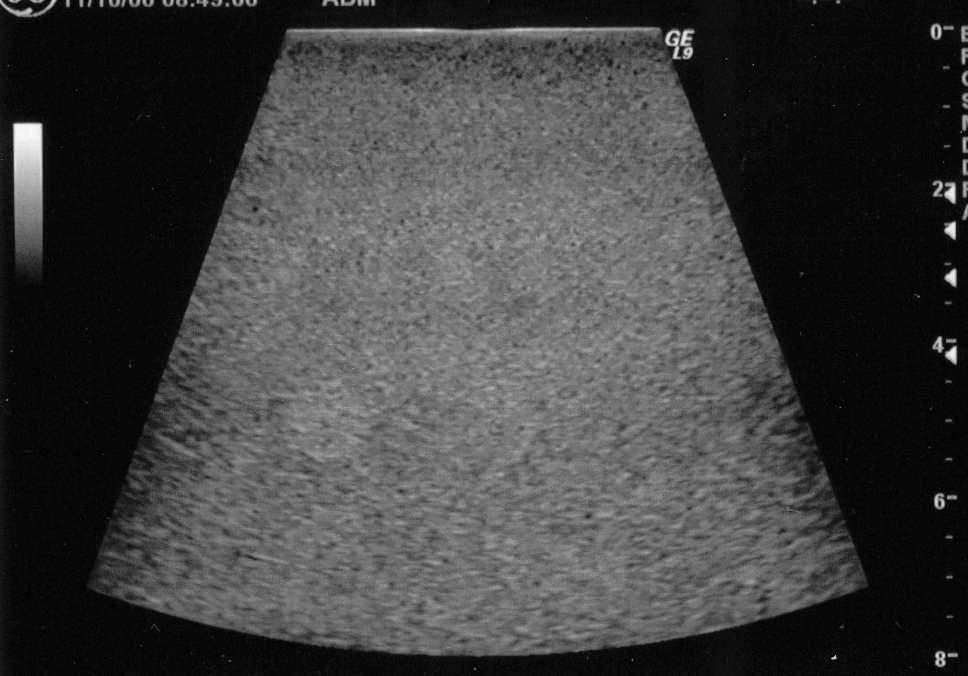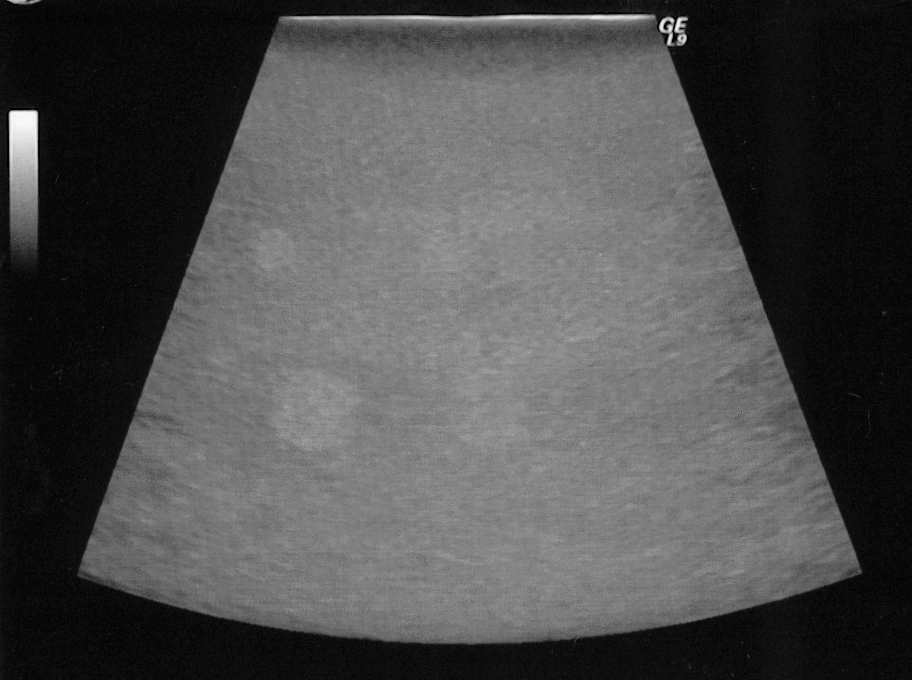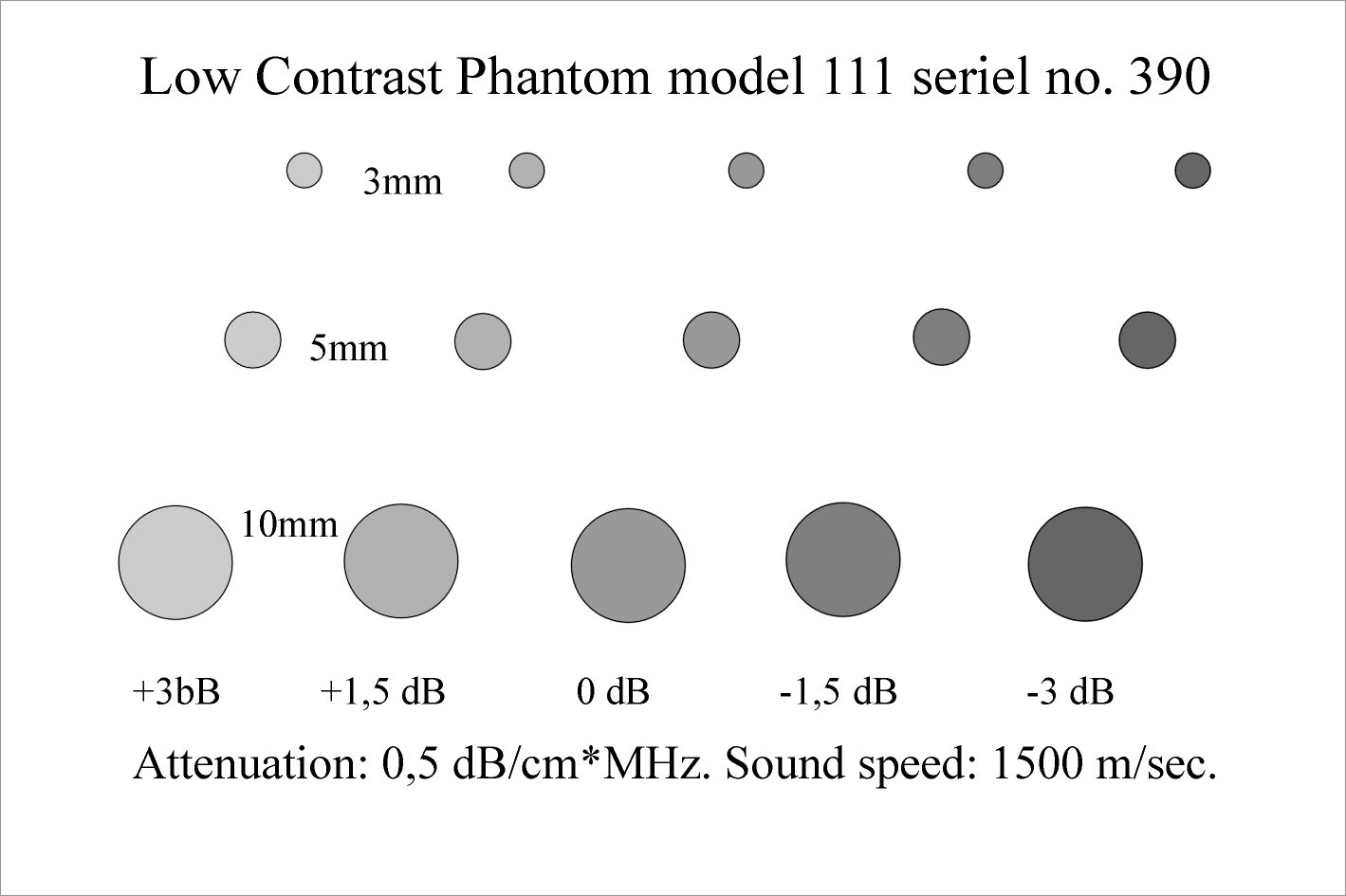
Model 111, Low contrast phantom




|
|
|
Model 111, Low contrast phantom
|
|
|
|
|||
|
|
|||
|
|
|||
|
|
|||
|
|
|||
|
|
Due to the nature of speckle, the ability to distinguish between regions with little differences in back scattering must be regarded more as a physiological problem than a physical one. If, however, a scanner has some kind of speckle reduction mechanism it can be tested with the low contrast phantom.
The phantom consists of a liver
tissue equivalent mass with 3 rows of holes with diameters of 3, 5
and 10 mm. The center hole in each row contains the same material as
the surroundings. The neighboring holes differ + and – 1,5 dB
in back scattering, but have the same attenuation. The outermost
holes differ + and - 3 dB.
Due to the casting, a specular reflex
arises from the interfaces, even in the reference holes in the
center. Nothing has been added to correct the sound velocity, so the
phantom can be scanned through tap water, without risk of damaging
the parameters. As a consequence the sound velocity is 3% lower than
tissue. This has no impact on the speckle pattern.
Dimensions: 12 * 18,5 * 9,5 cm
Weight: 1,2 kg
Background mass:
Attenuation: 0,5 dB/cm*MHz +/- 0,07
dB/cm*MHz.
Sound speed: 1490 m/sec +/- 15 m/sec.
Density: 1020
kg/m3 +/- 20 kg/m3.
Objects:
Attenuation,
sound speed and density as background
Back scattering is made so
that it will be : +3, +1,5, 0, -1,5, -3 dB relative to background,
all +/- 1 dB.